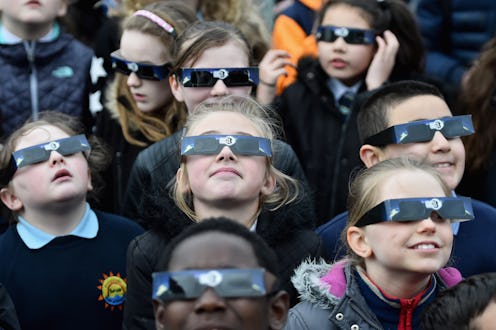Life
Here's How To Figure What The Solar Eclipse Will Look Like Where You Are

While the solar eclipse on Aug. 21, 2017 will look super cool for everyone on the American mainland, it will be even cool-er for the people in states that are considered to be in something called "the path of totality." But, what is the path of totality? If that's something you're wondering, you've come to the right place to find out.
You see, the eclipse is only a complete black-out for certain cities. Basically, you have to be in the bull's eye center of the shadow of the moon in order to see the full effect — or, rather, the full totality.
Starting in northwest Oregon, the moon's shadow will appear to be the same size as the sun, and in-line with the sun for sky gazers looking up. The path will travel on a gradual southeast path, ending in South Carolina before leaving the mainland for the Atlantic ocean. But, before then, it will pass through the center of Idaho, the southwest corner of Montana, the center of Wyoming, a south bound diagonal of Nebraska, the northeast tip of Kansas, like a seatbelt across Missouri, the southern tip of Illinois, the western end of Kentucky, an eastern diagonal through Tennessee, the northwestern tip of Georgia, the far western side of North Carolina, and lastly, the solid mid-section of South Carolina.
For everyone else outside of the path of totality, they'll have a slightly peripheral experience. What they'll see when looking up during the peak of the eclipse (with protective eyewear, of course!), will look more like the sun if the moon took a bite out of it, or something. Don't be let down by your coordinates — it will still look really cool. Even if you only have a very partial eclipse, the sky will still get darker, and the sun will still look very different.
And of course, if you don't live within the path of totality, it doesn't mean that you won't see the full effect at all — you'll just have to wait to see it on Instagram. Or, you can download one of the various eclipse-centric apps that will let you see real-time footage from some of the best space photographers and astronomers out there.
No matter where you are, make sure you get yourself a set of protective eye wear, because no, sunglasses won't cut it. Watching the eclipse with a naked eye can cause permanent or temporary blindness, so do your homework and order a pair of NASA-approved eclipse glasses so that you can get the best, and safest view possible.